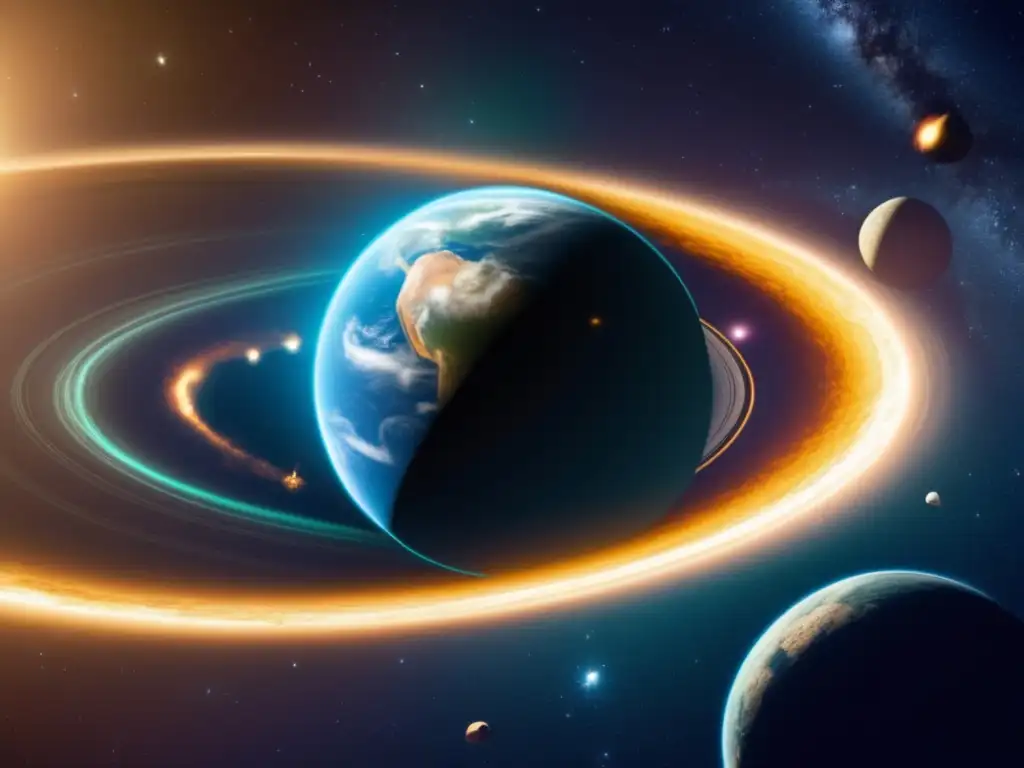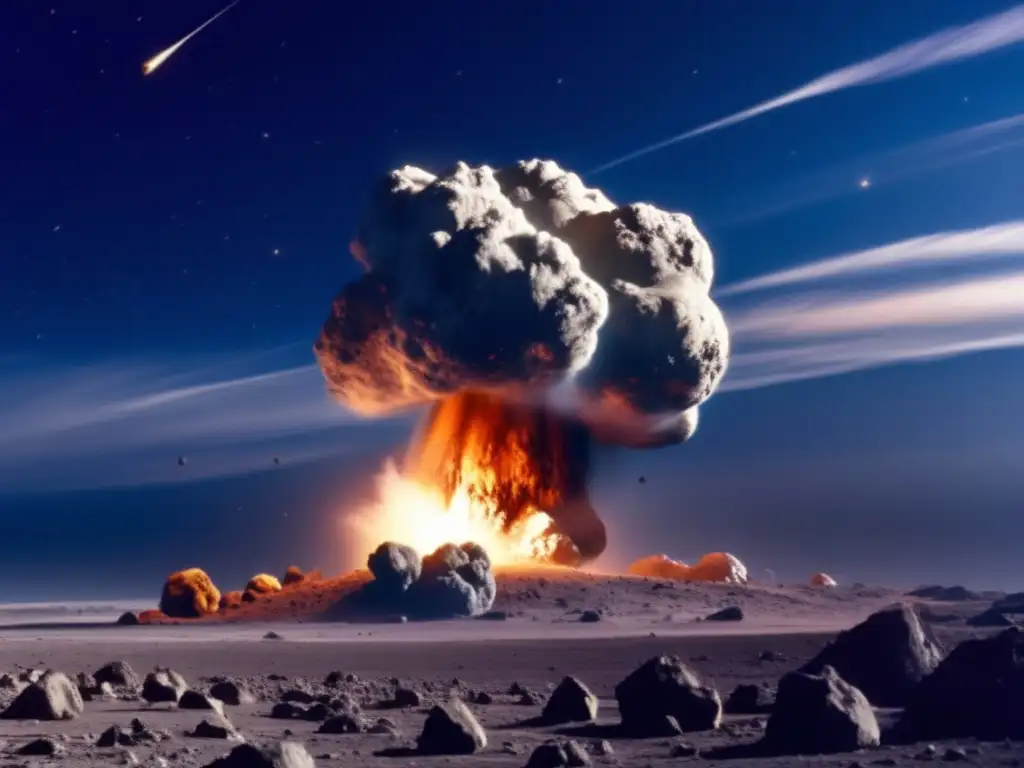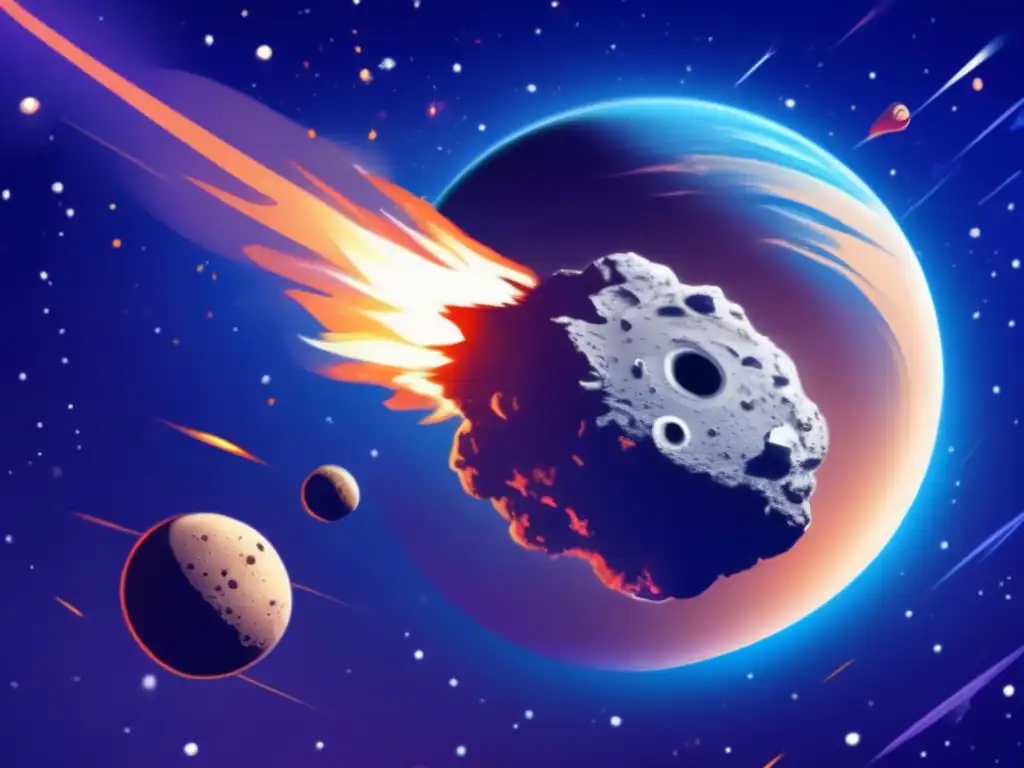Between A Rock And A Hard Place: Earth’s Position In The Asteroid Belt

Introduction
The asteroid belt, located between Mars and Jupiter, is a fascinating region filled with thousands of asteroids. These space rocks are remnants from the early solar system, and they offer insight into our planet's formation and evolution. While it may seem that Earth is at a safe distance from this celestial area, it's important to understand the risk of asteroid impacts and what measures can be taken to protect our planet. In this article, we'll explore Earth's position in the asteroid belt and its potential dangers.
The Asteroid Belt

Astronomical Overview
The asteroid belt is a region in our solar system filled with small rocky objects ranging in size from just a few meters to hundreds of kilometers in diameter. This region is located between the orbits of Mars and Jupiter and occupies the space where a planet could have formed, but didn’t due to the gravitational influence of Jupiter. There are estimated to be millions of asteroids in the asteroid belt, with the total mass being less than the Moon.
Formation and Composition
Asteroids are remnants from the early solar system and offer valuable insights into the formation and evolution of our planet. Scientists believe that many of these rocks are leftover planetesimals, which are the building blocks of planets that never grew large enough to become planets themselves. The majority of asteroids in the asteroid belt are composed of rock and metal, but there are also some icy bodies that likely originated in the outer solar system.
The Threat of Asteroid Impacts
While most asteroids in the asteroid belt pose no threat to Earth, there is always the risk of a collision. In fact, scientists have evidence that suggests that some asteroids have collided with Earth in the past and could do so again in the future. Large asteroid impacts can cause significant damage to our planet and have the potential to wipe out entire species.
Earth's Position in the Asteroid Belt

The Distance from Earth to the Asteroid Belt
Earth is located at a safe distance from the asteroid belt, approximately 150 million kilometers away. While this may seem like a significant distance, it's important to note that asteroids can still pose a threat to our planet even at this distance. It only takes one small asteroid to cause significant damage or destruction, as we saw in the 2013 Chelyabinsk meteor explosion in Russia.
The Orbit of Earth in Relation to the Asteroid Belt
Earth's orbit lies within the asteroid belt, which means that we cross this region twice a year. During these crossings, there is a higher chance of an asteroid impact, although the likelihood is still relatively low. NASA and other organizations are constantly monitoring the asteroid belt for potential threats and are working on ways to mitigate the risk of a collision.
The Importance of Studying the Asteroid Belt
Studying the asteroid belt is crucial for understanding the history and composition of our solar system. By analyzing the different types of asteroids found in the asteroid belt, scientists can learn more about how planets formed and evolved. Additionally, studying the potential risks posed by asteroids allows us to develop methods for mitigating those risks and protecting our planet.
The Role of Science and Technology in Mitigating Asteroid Impacts

Tracking Potentially Hazardous Asteroids
NASA's Near-Earth Object Program is responsible for tracking potentially hazardous asteroids and comets that could pose a threat to our planet. By studying the orbits of these objects, scientists can determine whether or not they are on a collision course with Earth and take appropriate action to mitigate the risk.
Developing Methods for Deflecting Asteroids
While tracking potentially hazardous asteroids is important, it's also crucial to have methods for deflecting them away from Earth. NASA has developed several concepts for deflecting asteroids, including using a spacecraft to ram into the asteroid and alter its trajectory, or using a gravity tractor to gradually pull the asteroid off course.
The Importance of International Collaboration
Asteroid impacts are a global issue, and it's important for countries around the world to collaborate and work together to mitigate the risks. In 2019, NASA and the European Space Agency signed a historic memorandum of understanding to work together on planetary defense initiatives, including asteroid detection and deflection.
Frequently Asked Questions

-
Could an asteroid in the asteroid belt hit Earth?
While the chances are relatively low, it is possible for an asteroid in the asteroid belt to hit Earth. It's important for scientists to monitor the region for potential threats and develop methods for deflecting asteroids if necessary.
-
How do scientists track asteroids in the asteroid belt?
Scientists track asteroids in the asteroid belt using telescopes and other remote sensing instruments. By analyzing the light reflected from these objects, scientists can determine their composition and orbit.
-
What would happen if a large asteroid hit Earth?
A large asteroid impact could cause significant damage and destruction, potentially wiping out entire cities or even civilizations. It's important for NASA and other organizations to monitor the asteroid belt and develop methods for mitigating the risk of an impact.
-
Are there any plans to mine asteroids in the asteroid belt?
Yes, there are ongoing discussions about the potential for mining asteroids in the asteroid belt. Some companies are already working on developing technology for harvesting resources from these space rocks.
-
What can individuals do to help prevent asteroid impacts?
While individuals can't prevent asteroid impacts, they can support efforts to track and deflect potentially hazardous asteroids. Supporting NASA and other organizations that work on planetary defense initiatives is one way to get involved.
Conclusion
Earth's position in the asteroid belt may seem precarious, but scientists are working tirelessly to monitor the region for potential threats and develop methods for mitigating the risks of asteroid impacts. By studying the asteroid belt, we can learn more about the early solar system and our planet's formation. It's important to support efforts to improve our understanding of asteroids and protect our planet from potential impacts.
If you have any thoughts or questions about this article, please leave them in the comments section below. Thank you for reading!
Additional Resources

For more information about asteroids and planetary defense, check out the following resources:
- NASA Planetary Defense
- ESA Asteroids
- The Planetary Society: Asteroids and Comets
- Astronomical Society of the Pacific
 Alien Impact: The Search For Extraterrestrial Asteroid Sites
Alien Impact: The Search For Extraterrestrial Asteroid Sites Cosmic Showers: The Frequency Of Asteroid Strikes
Cosmic Showers: The Frequency Of Asteroid Strikes Impact Or Bust: What Happens When An Asteroid Misses?
Impact Or Bust: What Happens When An Asteroid Misses?If you want to discover more articles similar to Between A Rock And A Hard Place: Earth’s Position In The Asteroid Belt, you can visit the Asteroid Impacts category.
Leave a Reply

Articulos relacionados: